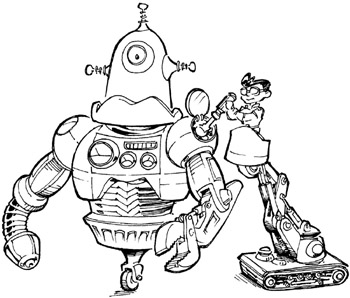Chapter 25: Playtesting
Overview

The common denominator, I would guess, is passion. Everyone says, ˜Well, why aren t games better ” why aren t there more really good games? And I think that the answer is that what this industry doesn t do, amazingly, is play the games it makes. We create a game, we ask the teams to work all the hours God sends, and we don t give them time to play the game. That s really what makes the difference ” sitting down and playing for hours and hours and hours.
” Peter Molyneux
Playtesting can be one of the most exhilarating parts of the game development cycle. It is then that you take the project you have been working on for months or years , during which time only the development team has played the game, and show it to people outside the team. And, if all goes well, you can watch as they are entertained by your work, want to play it more, compliment you on what you have done, and have suggestions for how you might make it better. Playtesting is not just a minor stepping-stone to getting the game shipped to the duplicators or uploaded to the Internet. Instead, playtesting is a key time during which you can transform your game from average to excellent , from something that shows promise to a game that is truly great. Few games ever came out of the developer s hands in absolutely perfect shape. Ideally, it is the playtesting cycle that gives your game the extra push to be the best it possibly can.
It is worth clarifying what exactly I mean when I say playtesting. This is not the same as debugging. Debugging is a more programming-oriented task in which all of the inherently broken aspects of the game are tracked down and fixed. This can be anything from the improper implementation of some game mechanics to graphical snafus to problems that actually crash the game. Certainly these bugs must be eliminated, but this is more a matter of concern for the programming team.
Playtesting is the design equivalent of bug fixing, though it is considerably less cut and dried . When playtesters look at a game, they try to see if the game is any fun and try to find faults in the game mechanics. This can be anything from a unit in an RTS game that is too powerful and allows players who acquire it early to totally dominate the game, to the illogical nature of how one enemy AI agent attacks players, to an unintuitive and difficult-to-use control system. It is in the playtesting stage that the game mechanics are tested and refined. Unfortunately, some game developers focus entirely on fixing bugs and too little on determining if the game is actually any fun to play. As a result there may be nothing actually wrong with the game, and it may be completely stable on all the systems it is supposed to run on. Too bad that no one wants to play the game because it is not any fun. All players would rather have a game that plays really well and crashes occasionally than one that runs flawlessly but is not worth the time it takes to play it. At least the former game is fun some of the time, while the latter game is boring all of the time.
EAN: 2147483647
Pages: 189